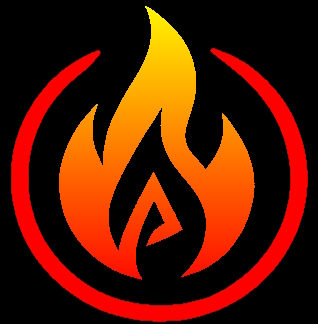Stop for a second. Breathe. If your life feels like a slow implosion, if your job grinds your spirit down, your relationship is unraveling, or your days blur into quiet misery, this post is for you. You’re responding exactly as a human should when trapped in the wrong pattern. The pain isn’t proof of your failure. It’s evidence that something in your world no longer fits. That pain, though? It’s an important signal.
No one teaches us that pain is inevitable, but some pain is worth it. There’s a line that hit me like a freight train the first time I read it: “Don’t hope for a life without problems. Hope for a life full of good problems.” That’s from Mark Manson’s excellent book “The Subtle Art of Not Giving a F*uck“, and it rewired something in me. Because most people don’t suffer too much; they suffer pointlessly.
The undeniable reality of life is that all of us will struggle. We will bleed. We cannot escape pain and suffering. The only freedom we get is to decide what it’s for.
It’s a simple idea, but like all true things, it punches harder the longer you sit with it. Life is not about avoiding pain. It’s about choosing the pain that matters. You don’t escape problems. You upgrade them.
Manson isn’t inventing a new philosophy. He’s just putting modern clothes on an ancient truth. Buddha said it millennia ago: Life is suffering. Not because life is cruel, but because craving permanence, comfort, or control is a guaranteed losing game. The Buddhist path isn’t about eliminating pain; it’s about waking up to its inevitability and learning to suffer skillfully.
Both perspectives share a spine: We don’t get to skip the hard. But we DO get to choose which version of hard we’re willing to live for.
Every Tradition Says the Same Thing
Dig deep enough into any serious worldview and you’ll find this idea standing like bedrock:
- Stoicism tells us to focus only on what we can control and treat obstacles as training.
- Christianity tells us to pick up our cross and follow into sacrifice, not comfort.
- Judaism gives us a God who invites argument, struggle, and wrestling.
- Islam reminds us that life is a test, and discipline is a sacred act.
- Taoism teaches us to flow with difficulty, not fight it.
- Hinduism names your path dharma, and tells you to walk it regardless of result.
- Existentialism strips it bare: The world is absurd. Choose anyway.
Every serious tradition admits: pain is not optional, but meaning is.
How I Apply This in Real Life
I started using this idea as a filtering mechanism. Every choice I make, I ask:
What problems come with this path? And do I like those problems better than the ones I have now?
I don’t play the lottery because I don’t want the emotional breakdowns, relationship collapses, and identity crises that tend to follow the people who win.
I don’t keep drama-starters in my life because I’d rather deal with loneliness than the chaos that follows people addicted to conflict.
I chose law enforcement because I like the problems that come with the job. I like high-stakes decision-making, responsibility, and navigating tension in real time. These are the kinds of problems I’m built to handle.
The most satisfying problems aren’t easy. They’re just aligned.
The Tribe Method: Choosing Your Suffering
If you’re part of the Tribe, or if you want to live like someone who is, here’s the process:
Step 1: Inventory the Problems You Currently Have
What problems do you face every day? What patterns keep repeating? Which ones drain you? Which ones actually feel meaningful?
Step 2: Compare Against the Problems You Want to Have
For every major decision in front of you, ask: what new problems will this bring into my life? Don’t fantasize about the benefits. Study the friction.
Then ask: Would I rather have those problems than these? That’s the real choice.
Step 3: Pick the Problems That Build You
Choose the ones that stretch you in the direction you want to grow. Not the ones that keep you safe. Not the ones that avoid conflict. The ones that forge you into something sharper.
Because in the end, the only real freedom you get is to decide what your pain is for.
Choose wisely. Then bleed for something that matters.
Combining All Three Principles
In previous posts, I introduced the idea of choosing the path that excites you, and choosing the path that will lead to growth. Together, these two ideas combine with this principle to create a three-pronged approach to decision-making: Struggle, Excitement, and Growth.
First, we ask: What kind of pain comes with this path? Because there will be pain. But if it’s the kind that tests your values, not your sanity, you’re on the right track.
Second, we ask: Does it scare me and excite me at the same time? That feeling, what I call “excited terror”, is usually your soul recognizing expansion.
Third, we ask: Will this choice patch my hull or raise my sail? In Kaufman’s model, every decision either stabilizes your boat or propels it forward. The sweet spot is when a struggle excites you and forces the kind of growth that makes you more seaworthy. That’s how you know it’s the right next move. It won’t be safe. But it will be worth it.
Conclusion
You don’t need another checklist. You need a compass. Struggle, Excitement, and Growth… that’s the compass. If a path doesn’t challenge you, stir something in you, and stretch you toward a deeper version of yourself, it’s not worth your time. Life is short. The pain is coming either way. You might as well suffer in the direction of your evolution.
Stop chasing comfort. Start choosing your crucible.
Because at the end of all of this, the question won’t be “Was it easy?” The question will be: Did it shape me into someone I’m proud to be?
Pick the problems that build you. Follow the fear that calls you forward. Grow into the wind.
And whatever you do, don’t waste your life avoiding the fire that was meant to forge you.
~Jason
###


Leave a Reply